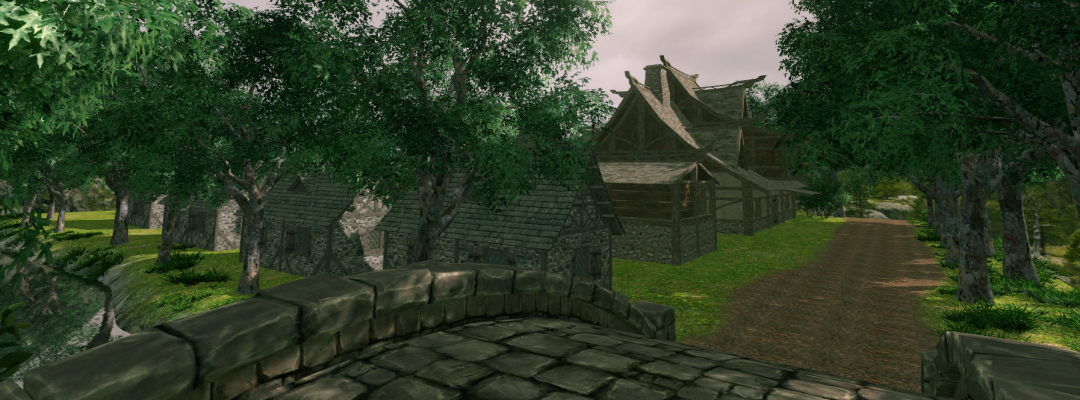The Hamlet of Stannilode (STAN - nih - lode)
Stannilode is little more than a mining camp for workers who are part of the Karnstown Mining Cooperative. Thus, while the residents may fool themselves into thinking they are independent prospectors and miners, they are merely workers for the Karn Family from nearby Karnstown. All of the shops and services in the town are owned an operated (sometimes from the shadows) by the Karn family.
Government
There is no formal government in Stannilode. The Karn family expects the three Cooperative foremen to act as the town guard to deal with the occasional minor altercations among miners that are to be expected in a village such as this. Any serious legal transgressions are dealt with by the Reeve and Magistrate of Karnstown. Persons accused of crimes are delivered to the city to face justice there.
In reality, though, most minor problems are summarily dealt with in Stannilode - either via a "talking to" by Cooperative foremen that don't want to deal with the paperwork associated with a criminal charge, or by the aggrieved parties themselves. As long as the mines are productive, nobody has any intention of changing this.
In reality, though, most minor problems are summarily dealt with in Stannilode - either via a "talking to" by Cooperative foremen that don't want to deal with the paperwork associated with a criminal charge, or by the aggrieved parties themselves. As long as the mines are productive, nobody has any intention of changing this.
Industry & Trade
The principal product of Stannilode is tin. The ore which the Dwarves call Stannite is plentiful in the region, but this is not the only ore found and harvested by the residents of the hamlet. The ore known to the Dwarves as Stibite is also found here. Both are refined in the smelteries set up outside the hamlet itself; ingots of the metals are then brought to Karnstown where they are alloyed into pewter after adding some of the copper harvested in Ferrilode.
Infrastructure
The hamlet has minimal infrastructure. A single, muddy street runs through the center of the town; miners have erected crude, mostly single-story dwellings along this road. The few businesses to be found in Karnstown are all in the center of the village and surround the village square.
The village square is discernable from the town's muddy main street only in that it a little bit wider, and the buildings that face onto it are two-story businesses instead of single story hovels. In the middle of the square, there is a communal well where all the folk of the hamlet can draw their drinking water.
The village square is discernable from the town's muddy main street only in that it a little bit wider, and the buildings that face onto it are two-story businesses instead of single story hovels. In the middle of the square, there is a communal well where all the folk of the hamlet can draw their drinking water.
Founding Date
2120CR
Alternative Name(s)
Tintown
Type
Hamlet
Population
59
Inhabitant Demonym
Stannites
Location under
Owning Organization
Half Orcs: 15%
Gnomes: 6%
Dwarves: 5%
Goblins: 4%
Half Elves: 2%
Halflings: 2%



Comments